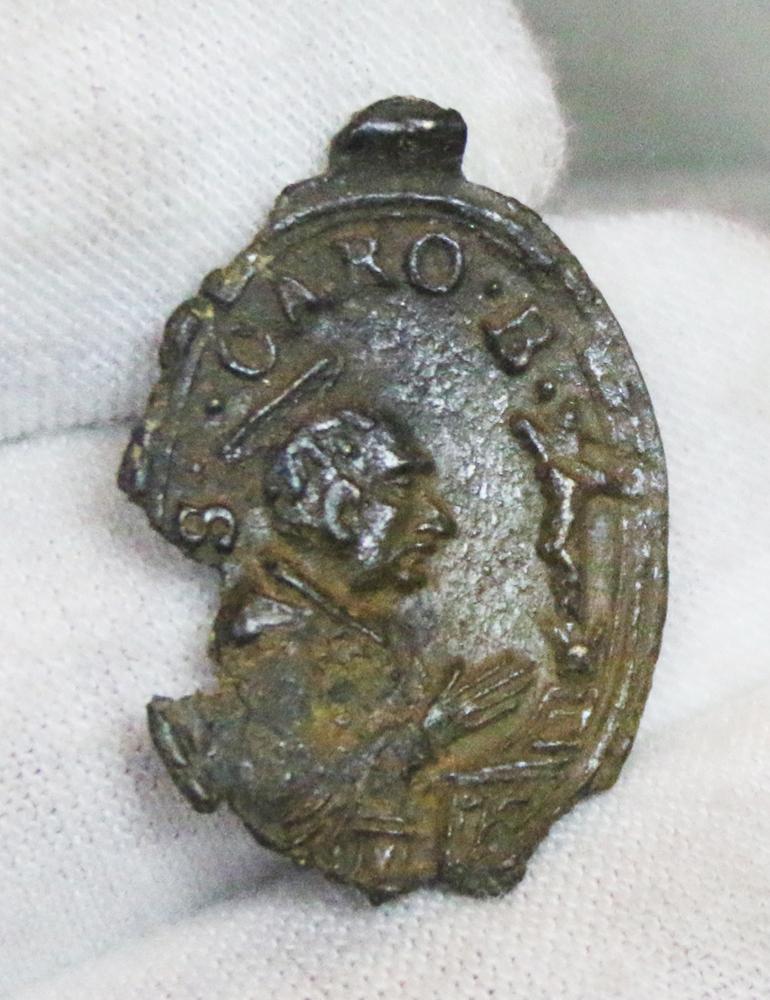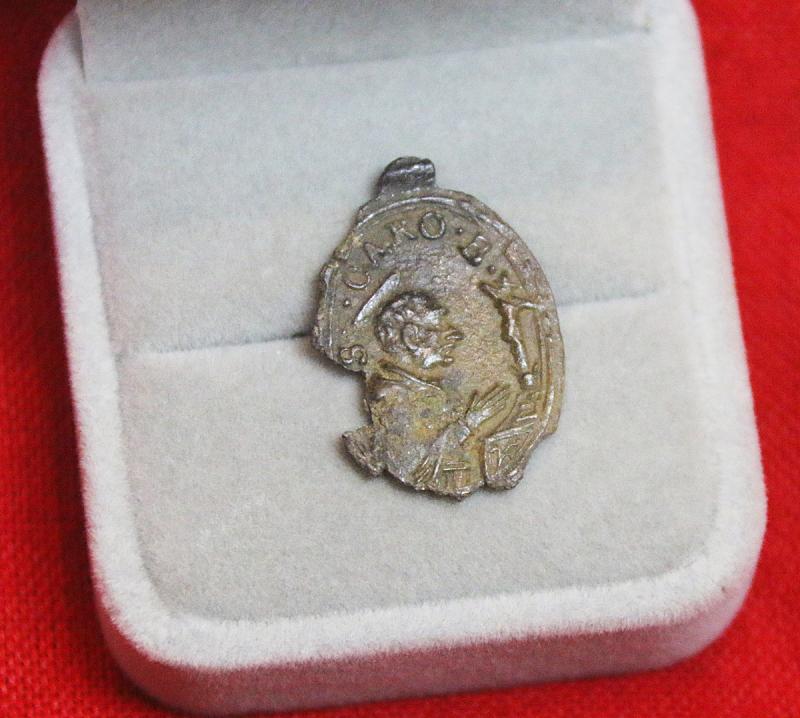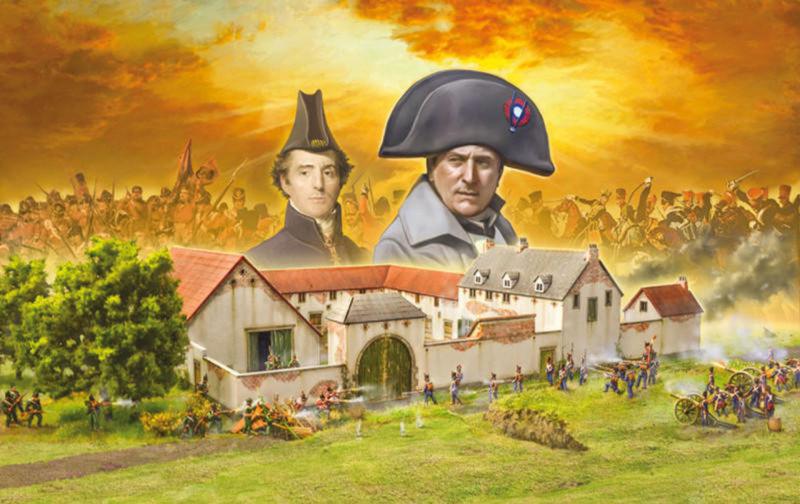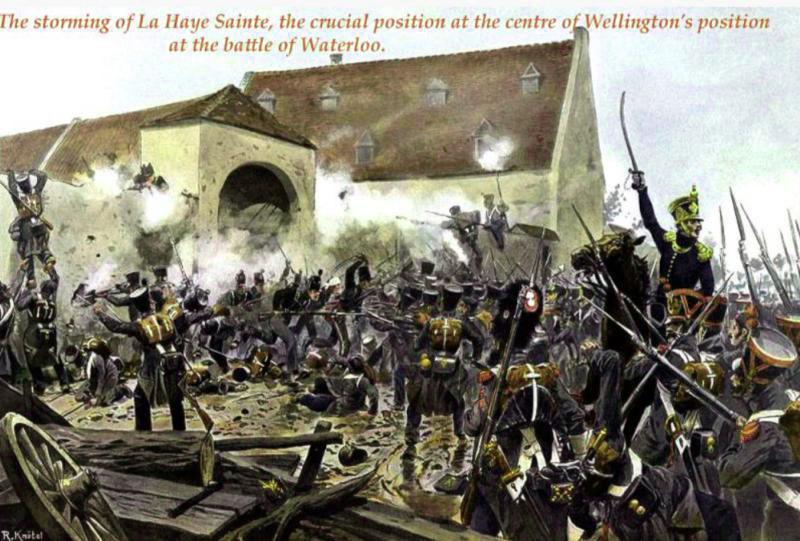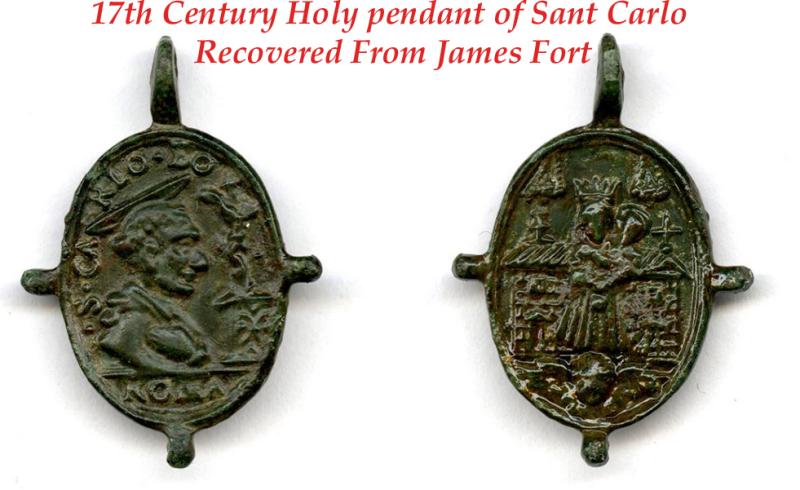Waterloo Recovered, Battle Damaged, 17th Cent. Small Holy Medallion Pendant Relic of Likely a French Armourer or Artilleryman, as It Depicts Saint Barbara, {Patron Saint of Armourers & Artillerymen} & St. Carlo Borromeo
We presume it was worn by French combatant as it is a Catholic pendant, and although most British were Protestant some were Catholic, yet the French were mostly Catholic. To the owner that perished that wore it, it was likely his family's ancestral holy relic.
This extraordinary Waterloo battle relic was already almost 200 years old when it was lost at Waterloo, and discovered around La Haye Sainte (named either after Jesus Christ's crown of thorns or a bramble hedge round a field nearby).
It is a walled farmhouse compound at the foot of an escarpment on the Charleroi-Brussels road in Belgium. It has changed very little since it played a crucial part in the Battle of Waterloo on 18 June 1815.
La Haye Sainte was defended by about 400 King's German Legion troops during the Battle of Waterloo. They were hopelessly outnumbered by attacking French troops but held out until the late afternoon when they retired because their ammunition had run out. If Napoleon Bonaparte's army had captured La Haye Sainte earlier in the day, almost certainly he would have broken through the allied centre and defeated the Duke of Wellington's army.
The capture of La Haye Sainte in the early evening then gave the French the advantage of a defensible position from which to launch a potentially decisive attack on the Allied centre. However, Napoleon was too late—by this time, Blücher and the Prussian army had arrived on the battlefield and the outnumbered French army was defeated.
One side depicts Saint Barbara the Martyr. Saint Barbara is often portrayed with miniature chains and a tower as she is here. As one of the Fourteen Holy Helpers, Barbara is a popular saint, perhaps best known as the patron of armourers, artillerymen, military engineers, miners and others who work with explosives because of her legend's association with lightning, and also of mathematicians. A 15th-century French version of her story credits her with thirteen miracles, many of which reflect the security she offered that her devotees would not die before getting to make confession and receiving extreme unction.
Saint Barbara is venerated by Catholics who face the danger of sudden and violent death at work. She is invoked against thunder and lightning and all accidents arising from explosions of gunpowder. She became the patron saint of artillerymen, armourers, military engineers, gunsmiths, and anyone else who worked with cannon and explosives, due to her being tortured for her faith but the flames were miraculously put out before they could harm her, and her father who personally executed her for converting to Christianity, was struck by lighting and exploded while travelling home after publicly decapitating her.
The oval medallion bears on the opposite side the a Saint’s bust facing a crucifix on a pedestal. The legend to the top left reads “S CARLO BO” for the Saint. St. Carlo Borromeo (AD 1538-1584), a cardinal of the Catholic Church and archbishop of Milan. St. Carlos was infamous as one of Italy’s most significant counter-Reformation figures, During the reign of Elizabeth I, Borromeo welcomed English Catholics to Italy. Many significant English Catholics visited him. He was known to venerate and carry on his person an image of John Fisher, an English cardinal and bishop who supported Catherine of Aragon, Henry VIII’s first wife. Fisher was executed for upholding the Catholic Church’s doctrine of papal supremacy during the reign of Henry VIII.
An extremely similar oval holy pendant was recovered from James Fort, Virginia, the early site of 17th century settlers. Although it is unusual to find items typically associated with Catholics at James Fort, the medals displaying St. Carlo may be the most explicit anti-Protestant items brought from Europe to Virginia in the early 17th-century. St. Carlo Borromeo was canonized on November 1, 1610, while James Fort recovered from the ‘starving time’ and prepared to survive another challenging winter. Perhaps a traveller to Virginia brought these medallions in the hope that a God of any religion would offer some protection from a difficult life in Virginia.
As with all our items, every piece will be accompanied by our fully detailed Certificate of Authenticity
28mm long
Code: 25025
160.00 GBP


